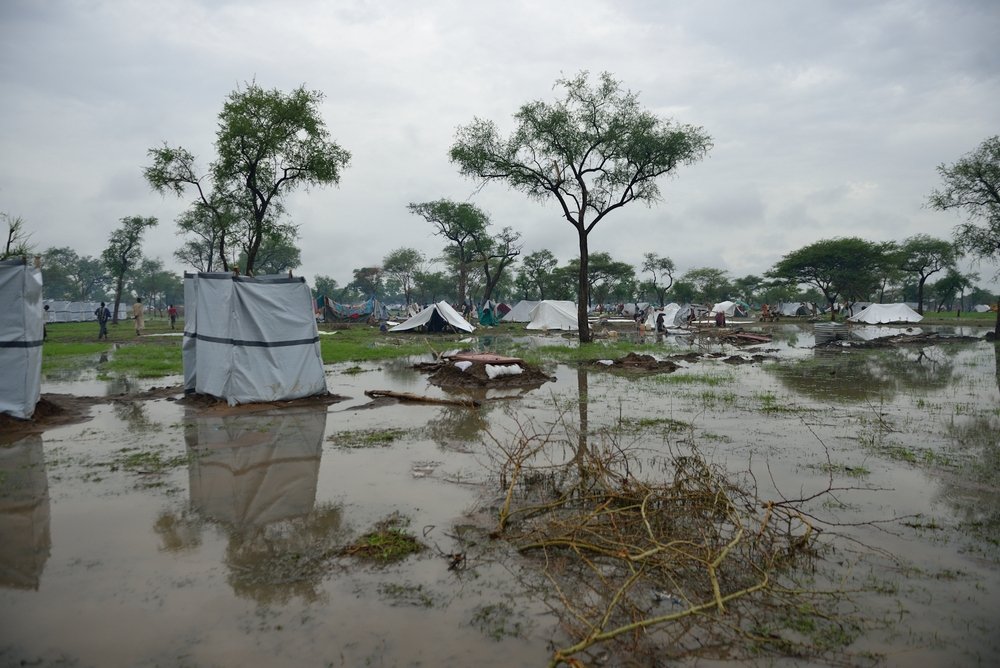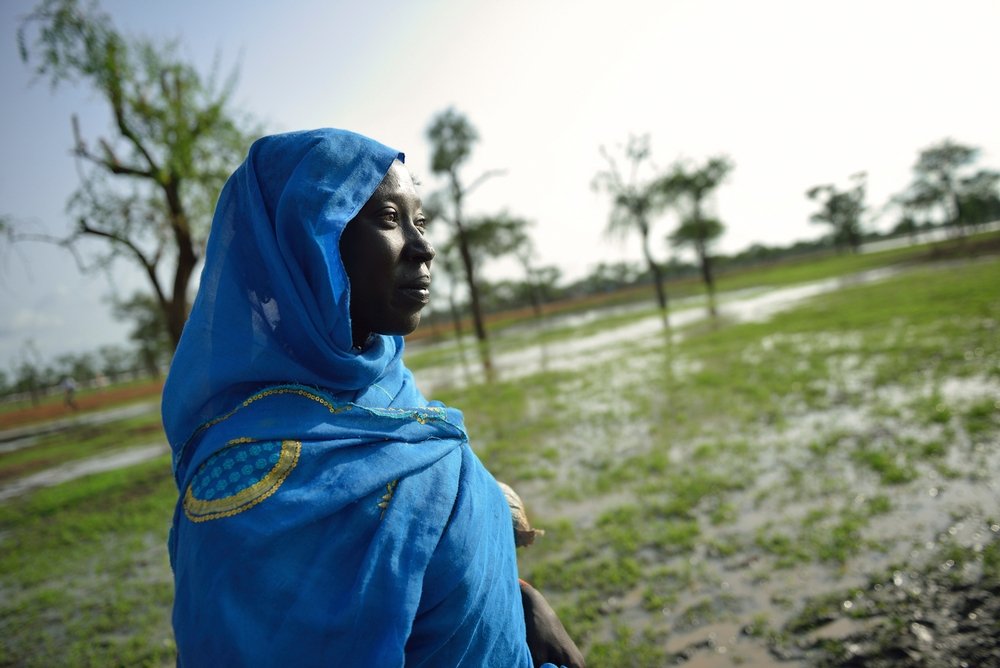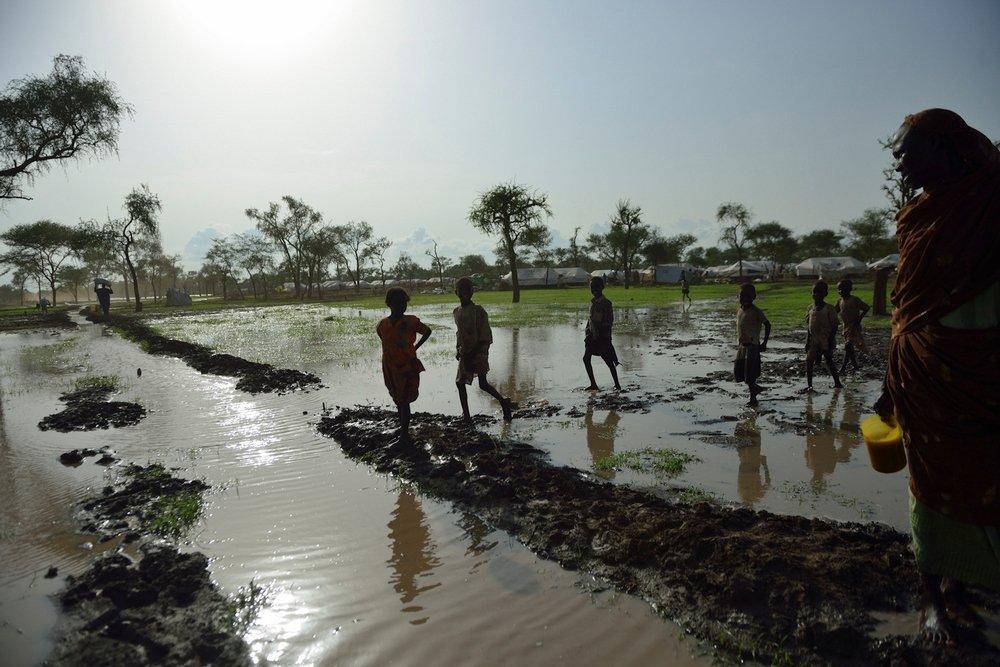
Juba/Johannesburg – Preliminary studies reveal mortality rates nearly double the emergency threshold in a refugee camp in South Sudan’s Upper Nile State, currently home to a quarter of roughly 120,000 refugees who have fled Sudan’s Blue Nile State since late last year, the international medical humanitarian organisation Doctors Without Borders (MSF) warned today.
Today MSF South Africa launches an appeal to South Africans to support MSF's operations for this urgent and acute crisis by donating to the emergency fund for South Sudan.The death rates were derived from rapid epidemiological surveys carried out in the Jamam refugee camp in Maban County prior to the onset of heavy seasonal rains that have flooded the camp and gravely expanded the risk of illness for the already weakened refugees. All agencies involved in the relief effort, led by the United Nations High Commission for Refugees (UNHCR), must find better options for the people living in Jamam. Failure to do so will almost certainly lead to more misery and deaths.
“These people have fled terrible violence in Sudan and lost family members during their arduous journeys for safety, and now they are sitting exposed in refugee camps on a flood plain and dying from preventable diseases due to horrific living conditions,” said Tara Newell, MSF emergency coordinator in Jamam.
Having arrived with stories of violence and harrowing conditions in Blue Nile, refugees in South Sudan’s Upper Nile State, in many cases already ill, have arrived in a place that is uniquely unsuited to accommodate a hundred thousand refugees. A baked mud wasteland in the dry season and mostly a swampy flood plain in the rainy season, there are few islands of dry ground and it is extremely difficult to locate places to drill for boreholes. The refugees met with inadequate shelter and sanitation facilities, far less than minimum standard quantities of clean water, and now the rising flood water is deepening the crisis.

After heavy rains the majority of Jamam camp - one of three refugee camps in the area - flooded last Thursday night. The latrines have overflowed, contaminating standing water, which is not fit for human consumption while there is a general shortage of potable water. Many camp residents, including children, sleep in wet clothes under soaked blankets, leaving them vulnerable to hypothermia.
Over the last two weeks, MSF medical teams in Jamam have treated at least 2,500 people for diarrheal diseases, respiratory diseases, malaria, and malnutrition. As the rains increase, more and more people are falling ill, especially from malaria and hypothermia. Young children are the most vulnerable.
“Our clinic is already filled with children suffering from pneumonia, diarrhea, and malnutrition,” said Dr. Erna Rijnierse, working with MSF in Jamam. “If they stay in these sorts of conditions, there could well be profoundly distressing consequences.”
Preliminary medical data gathered by MSF in Jamam Camp during the week of June 18, before the onset of consistent heavy rains, revealed a mortality rate among children of 2.8 per 10,000 per day, above the emergency threshold of 2/10,000 per day. The crude, or overall, mortality rate was 1.8. One death per 10,000 people per day is the emergency threshold, defining this as a severe situation. For Jamam camp alone it means that every day almost three (3) children were dying. Sixty-five percent of deaths were reportedly due to diarrhea.
The rains will also further exacerbate unhygienic conditions in the camps, creating ideal conditions for the further spread of disease. The soaked earth is already making transport exceedingly difficult to all the refugee camps in the area. To meet the immediate lifesaving needs of the refugees, roads and airstrips must be improved to facilitate the transport of aid personnel and heavy equipment in order to adequately achieve a comprehensive level of assistance needed by this highly vulnerable, exhausted population.
“The living conditions in Jamam are now simply unacceptable” said Newell. “What’s needed is for all agencies involved, led by the UNHCR, to join together to come up with a solution that can remove these refugees from the health risks associated with the dire living conditions in the camp. We have to proceed with a great sense of urgency.”
- MSF SA is now accepting donations to be channeled directly to our projects in Maban County that enable MSF teams on the ground to provide water, shelter, food and healthcare where the needs are most urgent.
TO DONATE:
- Call toll free at 0800 000331 or email donorservices@joburg.msf.org.
- For direct transfers to our bank account:
Account name: Médecins Sans Frontières South Africa
Bank: Nedbank
Bank account: 1944209425
Branch code: 194405
Branch name: Parktown
Our reference: South Sudan Crisis
MSF has been providing aid to refugees in Upper Nile State since November 2011, operating field hospitals, mobile clinics, intensive therapeutic feeding centers, and measles vaccination campaigns. MSF teams provide more than 6,000 consultations per week for the refugees in Upper Nile State. The organisation is also distributing basic survival items (like plastic sheeting, blankets and jerrycans), operating water and rehydration points, monitoring the mortality and morbidity among newly arrived refugees and provided emergency assistance to refugees who were moving from the border towards and between camps.
For interviews with MSF field staff and more information contact:
Borrie la Grange, MSF SA Head of Communication | 079 872 2950 | borrie.lagrange@msf.org
Find out more about MSF in South Sudan
